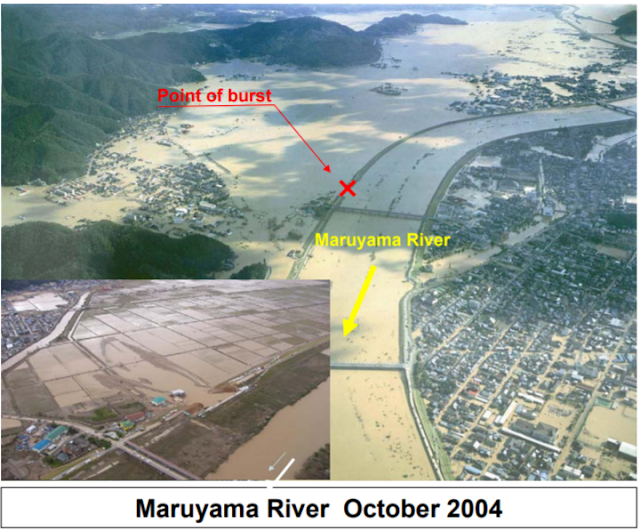Levee and Super Levee
A levee is defined as a “man-made structure, usually an earthen embankment, designed and constructed in accordance with sound engineering practices to contain, control, or divert the flow of water so as to reduce risk from temporary flooding”.
Levees are designed to manage a certain amount of floodwater and can be overtopped or fail during flood events exceeding the level for which they were designed. Levee failures can also be caused by structural failures resulting from improper maintenance, inadequate foundations, seismic activity, erosion, seepage, or burrowing animals.
Levees and floodwalls are typically built parallel to a waterway, most often a river, to reduce the risk of flooding on the landward side. Flood walls, which are typically made of concrete or steel, are often constructed on a levee crown to increase the height of the levee, without increasing the base of the embankment. Figure shows the components of a typical levee.
Super Levee
When a levee fails, the result can be more catastrophic than if the levee had never been constructed. For that reason, some urban areas in Japan (especially in Tokyo and Osaka) developed a new flood protection known as Super levee. Super levees are thicker levees that will not fail even in the most extreme events. Super levees are failure proof embankments that ensure safety even during a flood larger than the design one. The three main examples describing the safety advantages of Super Levees are:
- Overtopping. During unexpectedly extreme events, water may overtop and break ordinary levees. On the other hand, super levee will not break and water will flow slowly on the levee.
- Seepage. Water seeps may break the levee. On the other hand, super levee will not break because it is wide.
- Earthquake. During earthquakes ordinary levees may experience liquefaction and fail. On the other hand, super levees will are strong against liquefaction because the ground is improved and the slope is gentle.

















No comments
Post a Comment